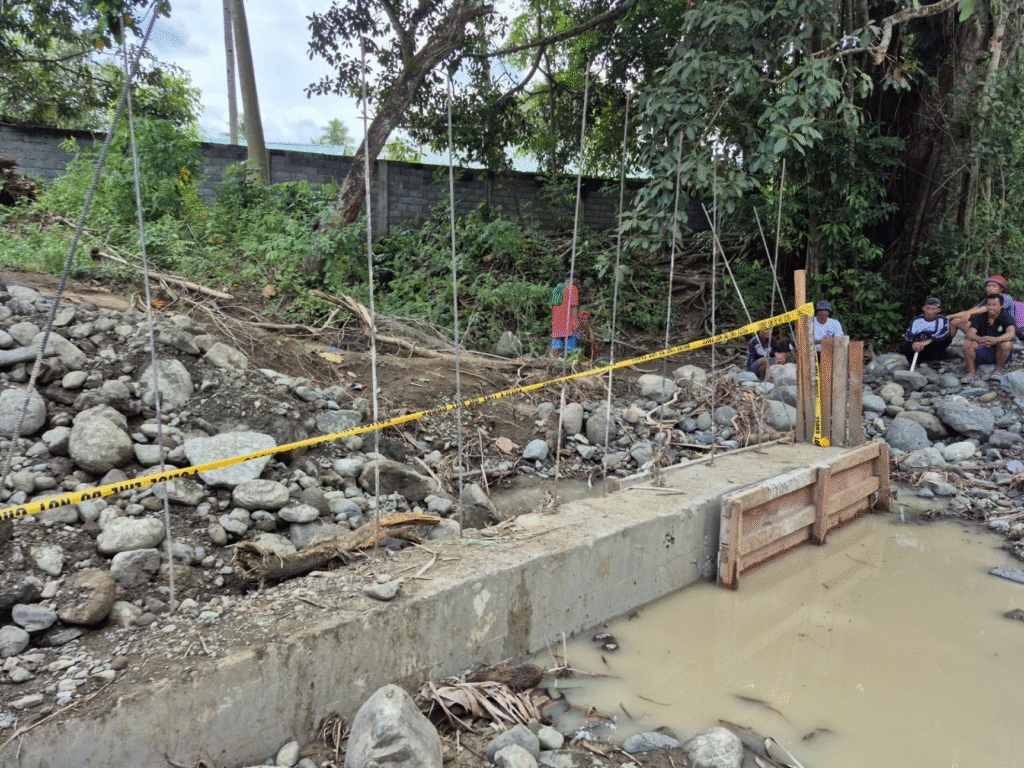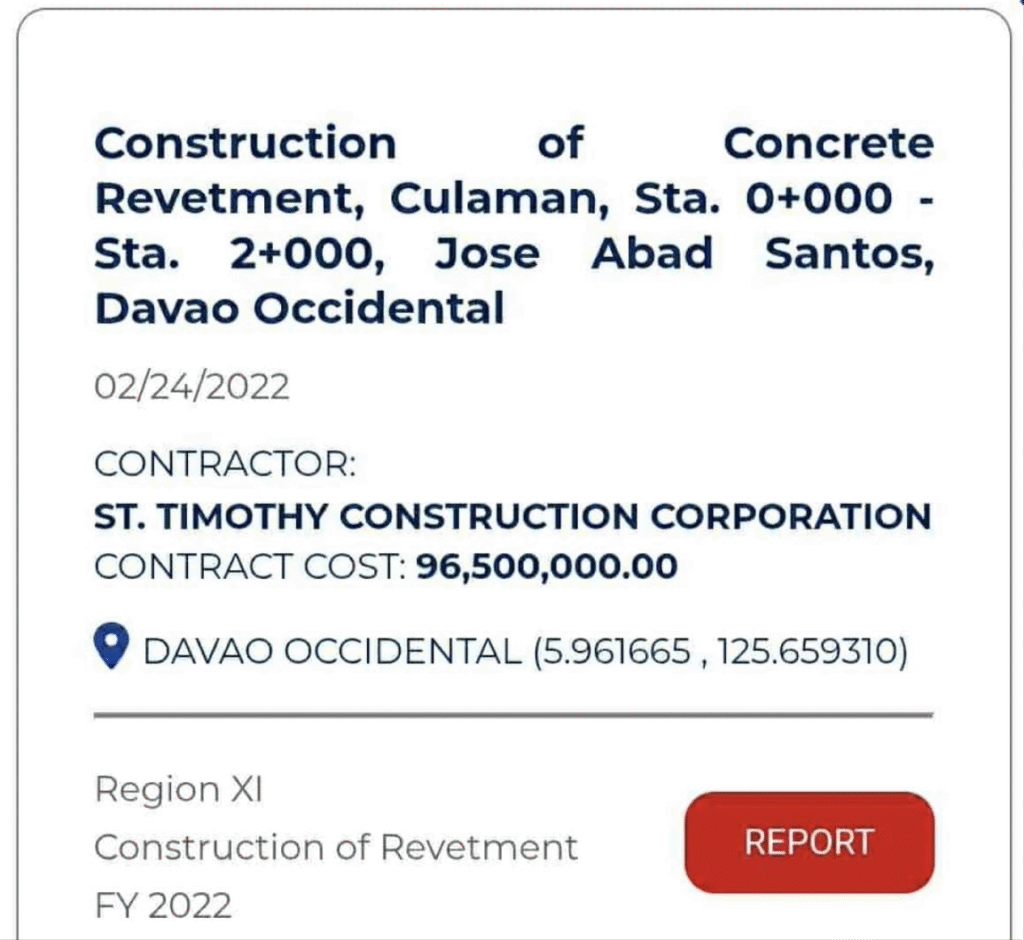
DAVAO CITY (September 30) —Jose Abad Santos (JAS), a remote municipality in Davao Occidental, is at the heart of a scandal involving ghost projects, substandard flood control infrastructure, and non-transparency by the Department of Public Works and Highways (DPWH).
Local and national investigations have uncovered that several infrastructure projects supposedly completed or already paid in full are either shallow, delayed, or only just begun, raising serious questions about how taxpayer funds have been handled.
The Ghost Project: What We Know
A ₱96.5 million flood control project (construction of a concrete revetment near Culaman Bridge, Barangay Culaman) was allocated in 2018, awarded to St. Timothy Construction Corporation (owned by Pacifico “Curlee” Discaya and Cezarah “Sarah” Rowena Discaya) in early 2022.
The project was identified and budget was allocated in 2018 but reported to have been completed in 2022 without the knowledge of the municipal government of Jose Abad Santos because they were not informed neither a required workboard was placed for transparency.
The government website posted that the project was completed in October 2022.
However, inspection on September 25, 2025 by DPWH Sec. Vince Dizon and members of the Independent Commission for Infrastructure (ICI), including Mayor Benjamin “Benjie” Magalong, showed that actual construction only began two to three weeks before inspection.
The site was immediately declared a “crime scene,” all works suspended, and possible charges (graft, malversation, procurement violations) are being considered against the contractor and involved DPWH officials
Substandard & incomplete projects elsewhere: What the audits and inspections show
While the ghost project in JAS is among the most blatant cases, investigations nationwide have also uncovered numerous flood control projects that are substandard, overpriced, or not meeting their proclaimed status. Some highlights:
-In Bulacan, Calumpit: COA (Commission on Audit) found ₱341 million worth of flood control projects by three contractors to be substandard or non-existent.
For example, Construction of Flood Mitigation Structures in Brgy. Frances and Brgy. Sta. Lucia, Calumpit, Bulacan, by Wawao Builders, declared 90% complete on record, but site inspection revealed otherwise.
-In Oriental Mindoro: A ₱3-billion flood control project in Barangay Tagumpay, Naujan, suspended after irregularities: masterplan specified 12-meter sheet piles, but actual construction used less than 3 meters. Project reported as 100% complete, but visibly unfinished.
These cases share several features: lack of signage, reports of full payment before actual construction, discrepancy between record and ground condition, and sometimes no visible structure at all.
The Local Impact in JAS: Substandard, Uninformed, Neglected
On the ground in Jose Abad Santos, the following current statuses have emerged from Mayor Jason John Joyce’s local assessments and the DPWH/ICI inspection:
Multiple projects (10 total) in JAS claimed on DPWH records; the mayor only became aware through the DPWH’s website or the “Magsumbong sa Pangulo” portal. None had posted billboards with project details or public notice, a required practice for transparency.
Lawayon Bridge: Structural bridge remains, but approach (road access) has been eroded and sometimes isolated when rains wash away soil. Repairs are superficial (“band-aids”) and do not address fundamental design failures.
Flood control walls / dikes / revetments in several barangays: many are either incomplete, poorly constructed (materials and workmanship questionable), or lack proper riverbank reinforcement, canals / waterways to channel overflow.
These projects have left communities unprotected, particularly during heavy rains, meaning damage to lives and property persists instead of prevention.
Why Transparency Matters — and Rules Been Broken
- Official rule: Public works projects must have signboards showing name of project, cost, duration, contractor, etc. This was not done for these projects in JAS. Without signboards, locals had no knowledge of existence.
- Reporting vs. Reality: Projects marked “completed” in documents (2022 in the case of the ghost project), but visibly not built at all, or only just started years later.
- Payment released early: Full payment given even when there was no completed work on the ground. This raises concerns about collusion inside the DPWH and poor oversight (including by COA).


